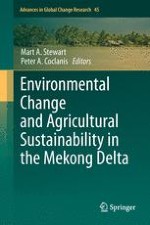2011 | OriginalPaper | Buchkapitel
23. The Transition from Conventional to Organic Rice Production in Northeastern Thailand: Prospect and Challenges
verfasst von : Natedao Taotawin
Erschienen in: Environmental Change and Agricultural Sustainability in the Mekong Delta
Verlag: Springer Netherlands
Aktivieren Sie unsere intelligente Suche, um passende Fachinhalte oder Patente zu finden.
Wählen Sie Textabschnitte aus um mit Künstlicher Intelligenz passenden Patente zu finden. powered by
Markieren Sie Textabschnitte, um KI-gestützt weitere passende Inhalte zu finden. powered by
